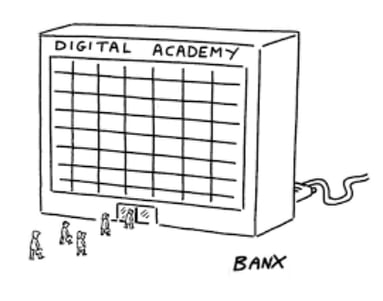
Having been with MyPass® now for almost five months, I’ve been enjoying time with our customers in the resources sector and hearing their challenges firsthand.
The challenges facing today’s business leaders are never-ending: navigating through unpredictable economic and specific market trends, maintaining safe and commercially successful operations, building talent pipelines - the list is endless. The central aim remains, to keep ahead of the pack and future-proof the business. Technology is the main drawcard having the potential to disrupt established operations and capitalise on new opportunities based on perceived gaps in the market.
But whilst technology is a tremendous enabler, it is not in and of itself, the solution. Adoption of new technology, new tools and platforms needs to be grounded in a clearly defined business strategy with clear outcomes. Not as a process enhancer, adopted to fill a need rather than solve a problem and drive the business. You need to be asking, what is the end game?
Based on my conversations to date, this is where I’ve started to see some common themes emerge:
Process is the strategy
When a new system implementation i.e. a new process is the goal, the organisation has lost sight of the business outcome and the core business problem they are trying to solve. Time to take a step back and revisit the desired end goal.
Operational silos
Not only do internal platforms need to integrate but internal teams, such as Site Operations and HR, need to work more collaboratively together to define the problems they need to solve, then map the solution. New systems are meant to simplify common tasks, but the reality is they often make life more complicated.
Multiple platforms doing single tasks, on their own
It is common to see companies using one platform for their permanent workforce management, one for onboarding, and another for recruitment and management of their casual workforce, with none of them connecting to the main player, the actual workers.
Time to implement
Like the proverbial kid in a candy store, companies want it now, not in 3 years’ time. A common question is, how quickly can we implement?
Team capacity
Digital fatigue particularly with back-office teams, is real. Too many new toys with no connection to an over-arching strategy can quickly erode any internal enthusiasm. Set and forget becomes the norm, with individuals relying on personal hacks to do their job, resulting in poor platform utilisation and uptake, low employee engagement and ultimately a squandering of resources – time, money and people.
From my view, a key missing factor in all of the above is understanding and adhering to the delivery of a clear business outcome. An outcome that has been defined as part of a wider business strategy and therefore, can be measured.
Our MyPass® platform, which we are continually optimising, does start to address these issues. When we started our intent was to develop a solution that redressed some fundamental issues: compliance management, access to industry-standard verified workers, a reduction in back end costs and centralised workforce management for permanent and casual workforces. By creating a central home for workers with a worker-owned and controlled data model, we’ve flipped conventional thinking. Our aim is to streamline workforce management, improve compliance and connect multiple users to deliver the right people, for the right jobs, at the right time.
If you’d like to know more about delivering digital transformation outcomes, get in touch. I’d welcome the chance to talk about your key problems and how MyPass® can be a part of that outcome.
Alex Goldrick

